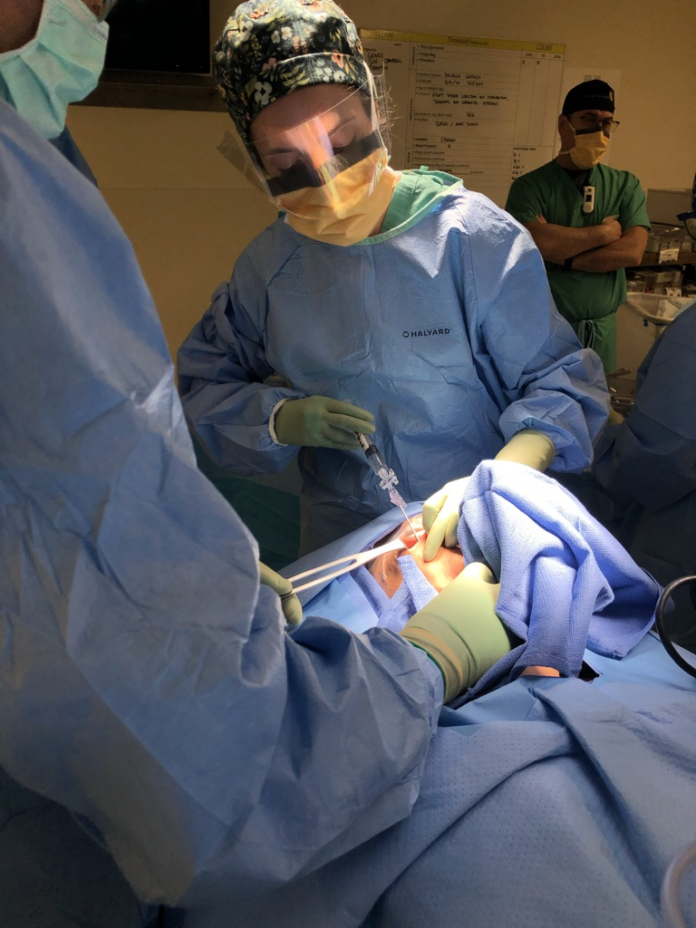“Scarless” thyroidectomy is a promising alternative that leaves no visible scar on the patient’s neck
By BRANDON NGUYEN — science@theaggie.org
UC Davis Medical Center became the first institution in California Central Valley to perform a “scarless” thyroidectomy, a surgical procedure that removes the thyroid gland. The procedure is performed through a technique called transoral thyroidectomy, which was first pioneered by recognized surgeons in Thailand.
Thailand’s leading international hospital, Samitivej Hospital, provided the foundation for many surgeons around the world to offer the choice of a scarless thyroidectomy to their patients. “The scar-free thyroid surgery technique through the mouth has dramatically improved the quality of life and increased the confidence of patients with thyroid conditions,” their website reads. “People are now becoming more health conscious and if the detected mass is not too large, it can be removed more safely and easily with no visible scar using this technique.”
The thyroid is a butterfly-shaped gland in the neck area that produces thyroid hormones, which affect bodily functions including metabolism, heart rate and sensation.
Dr. Claire Elizabeth Graves, an endocrine surgeon at the UC Davis Medical Center, gave an example of when a scarless thyroidectomy may be performed.
“Thyroid nodules are very common, so if we were to stick an ultrasound probe on everyone walking around, about half of the people we test would actually have some thyroid nodule,” Graves said. “But it’s actually rare for the nodules to indicate thyroid cancer, as the vast majority are benign; over 90% of nodules are benign. Nodules are common in cancer, and thyroid cancer is rising in frequency, being within the top 12 most common cancers in the U.S. right now.”
In addition to the growth of thyroid nodules, overproduction of hormones from the thyroid gland as well as abnormally large thyroid glands are two other reasons for performing a scarless thyroidectomy.
“When we say transoral, our access sites are going to be on the inside of the lower lip, where we make our little incisions so we can stay close to the skin and sort of come up and under the jaw and then get down to the thyroid that way,” Graves said. “And we can either do it with usually three incisions: one incision for our camera, two incisions for our hands to control the long instruments to be doing things.”
The transoral method is key to the “scarless” thyroidectomy, as no visible scar is left on the patient. Many of the steps of a traditional thyroidectomy — which involves a direct incision through the neck to access the thyroid gland — are retained. According to Graves, the success rate of the transoral method is largely the same as the traditional method.
“From the data that we have so far, the risks of the surgery are similar and the benefit is avoiding having the scar in the visible spot, which can be really bothersome to patients,” Graves said. “And it’s also things we don’t necessarily think about, like it’s not attractive to have a scar there, and if you have a patient that had thyroid cancer, they now have this scar that they’re looking at every day in the mirror. It’s a reminder of the event that they went through, which can be triggering to them and an invasion of privacy, so I think more than just being cosmetically pleasing, it has other effects as well.”
Dr. Michael Campbell, an endocrine surgeon at the UC Davis Medical Center, says that although this procedure is revolutionizing, not all institutions will offer the “scarless” thyroidectomy as an option, and it will not overtake the traditional method of incision at the neck.
“This [scarless thyroidectomy] is really a procedure that is really only done by high-volume thyroid surgeons at high-volume centers,” Campbell said. “It will continue to grow at high-volume centers but will likely not take over the traditional surgery just because there is a very small group of surgeons that possess the skill set to be able to do this.”
Written by: Brandon Nguyen — science@theaggie.org





